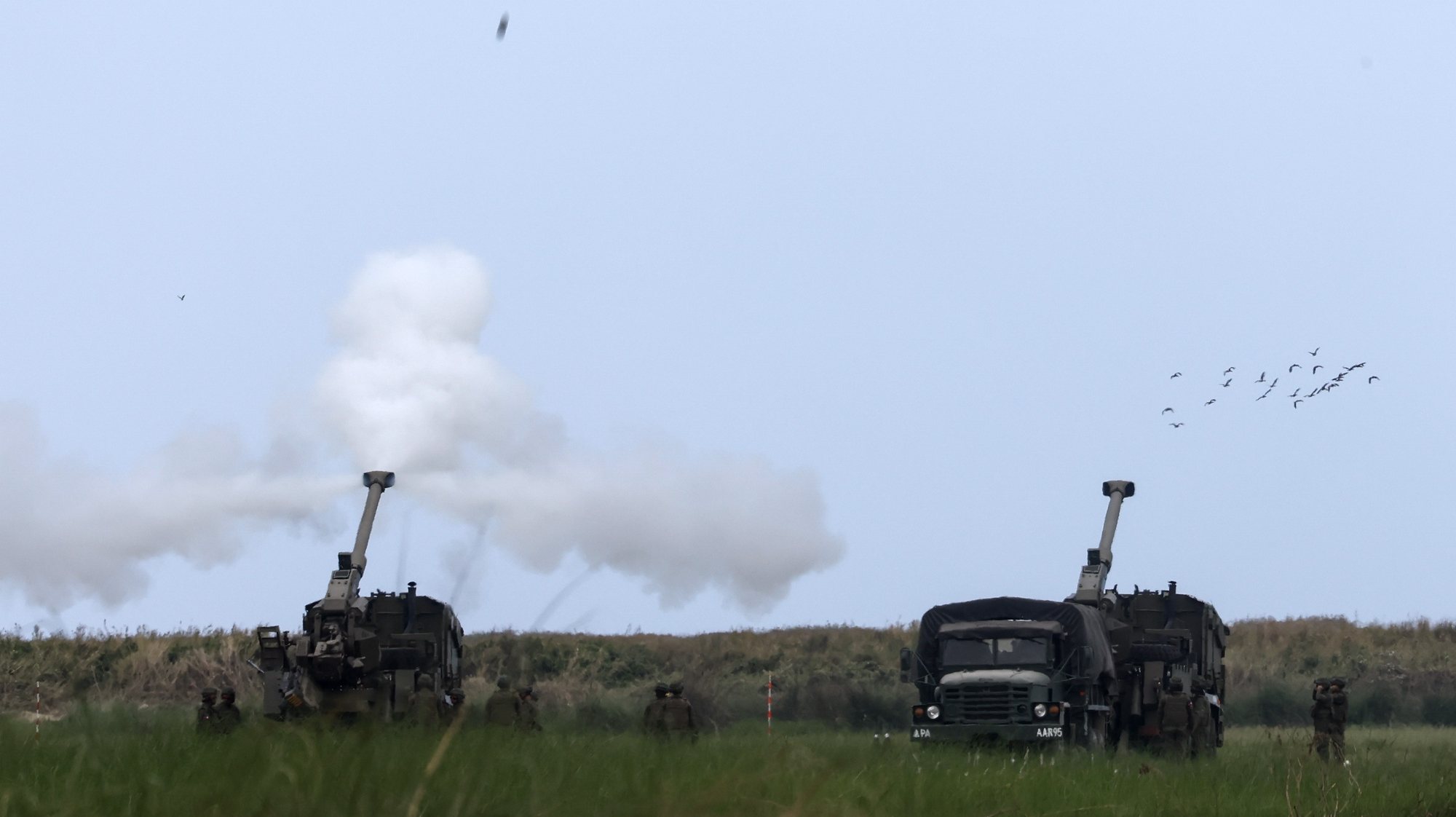Resembling a real war scenario, the largest joint military exercise ever between the US and the Philippines took place in the South China Sea and targeted a decommissioned warship.
Thousands of US and Filipino soldiers attacked a ship on Wednesday, using high-precision rockets, airstrikes and artillery fire, as part of the largest-ever war exercises between the two countries.
The exercises were done in Philippine waters in the disputed South China Seawhich is claimed almost entirely by Beijing, despite protests from neighboring countries.
Philippine President Ferdinand Marcos Jr. watched the display of US firepower from an observation tower in the coastal city of San Antonio in the country’s northwestern province of Zambales, the latest sign of his staunch support for Manila’s alliance with Washington.
Marcos ordered his army to shift the focus from counter-insurgency battles to external defense as China’s increasingly aggressive actions in the South China Sea become a central concern for Manila.
Philippines urges Beijing to stop intimidation in disputed South China Sea
The change in Philippine defense objectives is in line with the US government’s goal of strengthen an arc of alliances in the Indo-Pacific region to better combat the rise of China.
Beijing has angered the Philippines by repeatedly harassing the Southeast Asian country’s navy and coast guard patrols and scaring away Filipino fishermen in waters off the Philippine coast that are claimed by China.
Manila has staged more than 200 diplomatic protests against China since last year, including at least 77 since Marcos took office last June.
Sitting next to US Ambassador Mary Kay Carlson and her top defense and security advisers, Marcos used a pair of binoculars to watch the trajectory of rockets from the US High Mobility Artillery Rocket System that has become a weapon crucial for Ukrainian troops fighting against invading Russian forces.
Washington and Manila agree to increase US military presence in the Philippines
The exercises resembled a real war scene, with explosions and smoke caused by artillery fire and AH-64 Apache attack helicopters hovering overhead.
“This training increased the realism and complexity of the exercisesa key priority shared by the Armed Forces of the Philippines and the US military,” said Lt. Gen. William Jurney, commander of the US Marine Corps Forces Pacific.
“Together, we are strengthening our capabilities in broad-spectrum military operations in all domains,” said Jurney, US director of the annual joint exercises called Balikatan, which means “shoulder-to-shoulder” in Tagalog.
Some 12,200 US soldiers, 5,400 Philippine forces and 111 Australian counterparts took part in the exercises, the largest since Balikatan began three decades ago. The exercises showcased US warships, fighter jets and Patriot missiles, HIMARS and anti-tank javelins, according to US and Philippine military officials.
The ship attacked by the allied forces was a Decommissioned battleship of the Philippine Navywhich was towed some 18 to 22 kilometers out to sea.
Smaller floating targets, including empty drums attached together, were also used as targets to simulate an actual battle scene where a US Marine Corps command and control center allowed scattered allied forces to identify and They will locate enemy targets and fire rockets and precision missiles.
Philippine military officials said the maneuvers strengthen the country’s coastal defense and disaster response capabilities and were not targeted at any country.
US warship operating in South China Sea, Beijing denounces ‘intrusion’
China has in the past opposed military exercises involving US forces in the region, as well as the buildup of US military forces, warning that such operations increase tensions and undermine regional stability and peace.
Relations between Washington and Beijing have deteriorated rapidly in recent years over trade and technology disputes, Beijing’s territorial claims, human rights issues or the status of Taiwan and Hong Kong.
In February, Marcos approved an expanded US military presence in the Philippines, allowing rotating batches of US forces to use four more Philippine military bases. It was a sharp departure from the policy of his predecessor Rodrigo Duterte, who feared that a greater US military presence could antagonize Beijing.
China has strongly opposed the decision, which allows US forces to set up lookout posts in the northern Philippines across the Taiwan Sea and in the western Philippine provinces facing the South China Sea.
China has warned that the deepening of the Washington-Manila security alliance and their joint military exercises should not undermine China’s security and territorial interests or interfere in territorial disputes between Beijing and neighboring countries.
Source: Observadora
